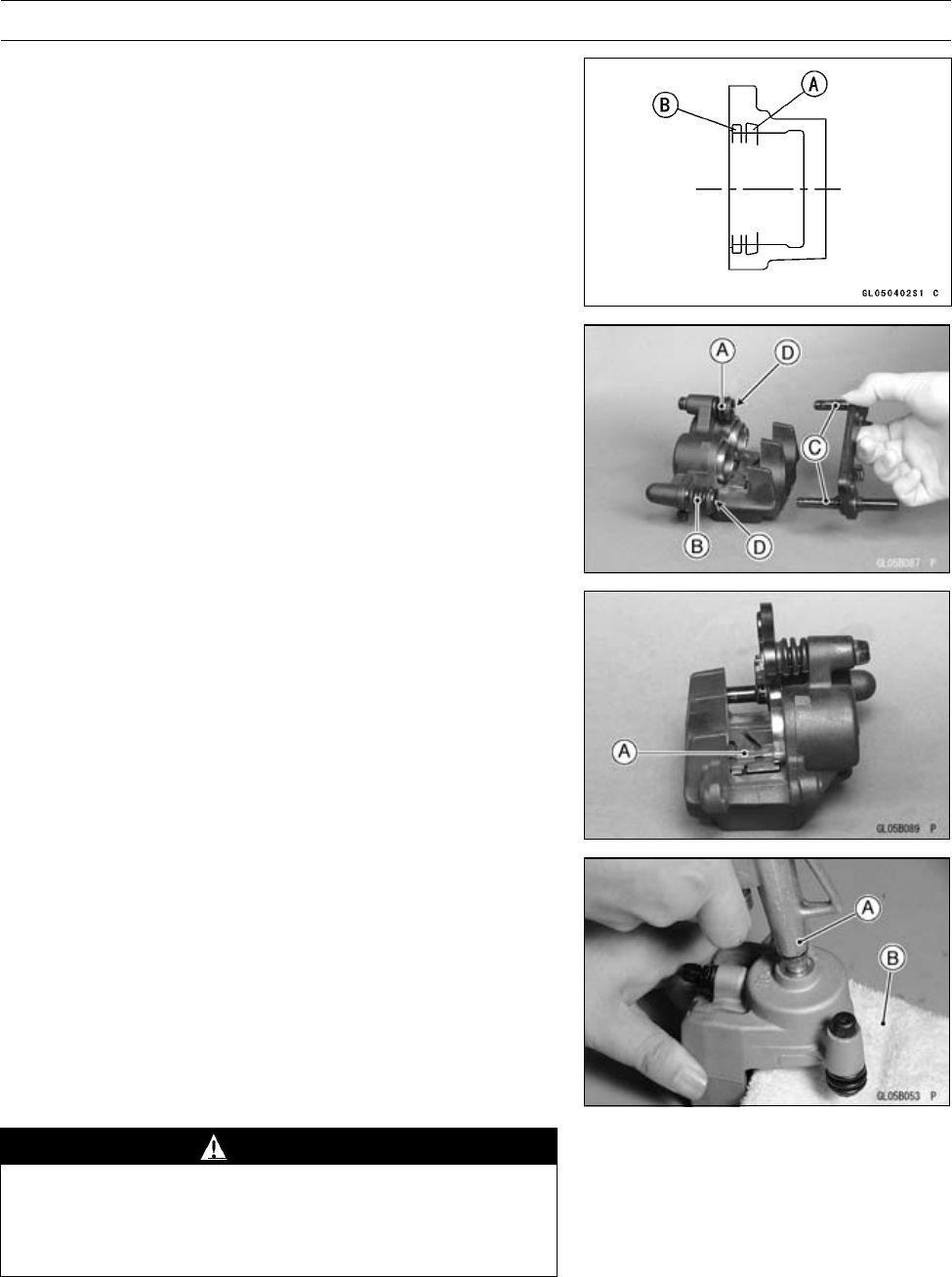
BRAKES 12-11
Calipers
•
Replace the fluid seals [A] with new ones.
○
Apply brake fluid to the fluid seals, and install them into
the cylinders by hand.
•
Replace the dust seals [B] with new ones if they are dam-
aged.
○
Apply brake fluid to the dust seals, and install them into
the cylinders by hand.
•
Apply brake fluid to the outside of the pistons, and push
them into each cylinder by hand.
•
Check the shaft rubber friction boot [A] and the dust cover
[B] replace them with new ones if they are damaged.
•
Apply a thin coat of PBC (Poly Butyl Cuprysil) grease to
the caliper holder shafts [C] and holder holes [D] (PBC is
a special high temperature, water-resistance grease).
•
Install the anti-rattle spring [A].
•
Install the pads (see Front Brake Pad Installation).
•
Wipe up any spilled brake fluid on t he caliper with wet
cloth.
Rear Caliper Disassembly
•
Remove the rear caliper.
•
Remove the pads and anti-rattle spring (see Rear Brake
Pad Removal).
•
Using compressed air, remove the piston.
○
Cover the piston area with a clean, thick c loth [B].
○
Blow compressed air [A] into the hole for the banjo bolt to
remove the piston.
WARNING
To avoid serious injury, never place your fingers or
palm inside the caliper opening. If you apply com-
pressed air into the caliper, the piston may crush
your hand or fingers.
•
Remove the dust seal and fluid seal.
•
Remove the bleed valve and rubber cap.
NOTE
○
If compressed air is not available, with the brake hose
still attached, apply the brake pedal to remove the pis-
ton. The remaining process is as described above.


















